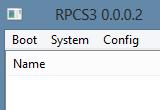
The load of lead was 30 fotmals, 175 stone, or 2,100 Merchant pounds (~918.525 kg). " cartload"), also known as a fodder, fother, and charrus, was an English unit of weight or mass of various amounts, depending on the era and the substance being measured. The handle is however often made short and straight from the blade, but the form above represented allows of more power being exerted by the workman in cutting through the stack, and it is an operation which demands considerable strength. This he does with a very strong and sharp knife, about thirty inches in length by nearly six in breadth of the blade, and formed as in fig. He then mounts the ladder and cuts perpendicularly through the thatch, as far down as will produce the requisite number of trusses.

This done, he measures the cut to be made in the stack, which is decided by the usual size of the trusses - each being as nearly as possible three feet by two and a half, and thick in proportion to the fineness and closeness of the hay those of the best quality being the thinnest.

In summary then, the standard weights of a truss were:Ī detailed description was provided in British Husbandry, sponsored by the Society for the Diffusion of Useful Knowledge, The latter act of 1796 established the weights as follows:

The weight of trusses was regulated by law and statutes were passed in the reigns of William and Mary, George II and George III. In London, there were established markets for hay at Smithfield, Whitechapel and by the village of Charing, which is still now called the Haymarket. Hay was required as fodder for animals, especially horses, and straw was used for a variety of purposes including bedding. Hay and straw were important commodities in the pre-industrial era. It would usually be cuboid, for storage or shipping, and would either be harvested into such bundles or cut from a large rick.


 0 kommentar(er)
0 kommentar(er)
